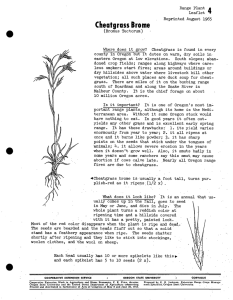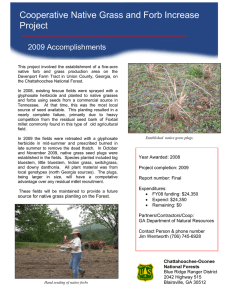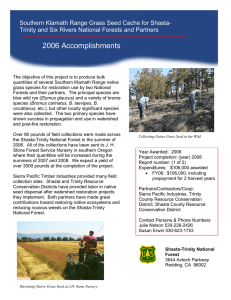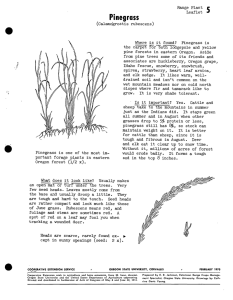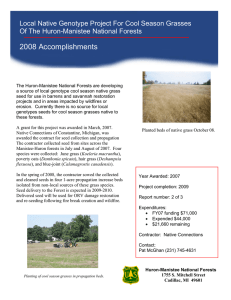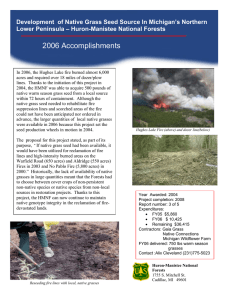Johnson Grass Oregon State System of Higher Education Federal Cooperative Extension Service
advertisement
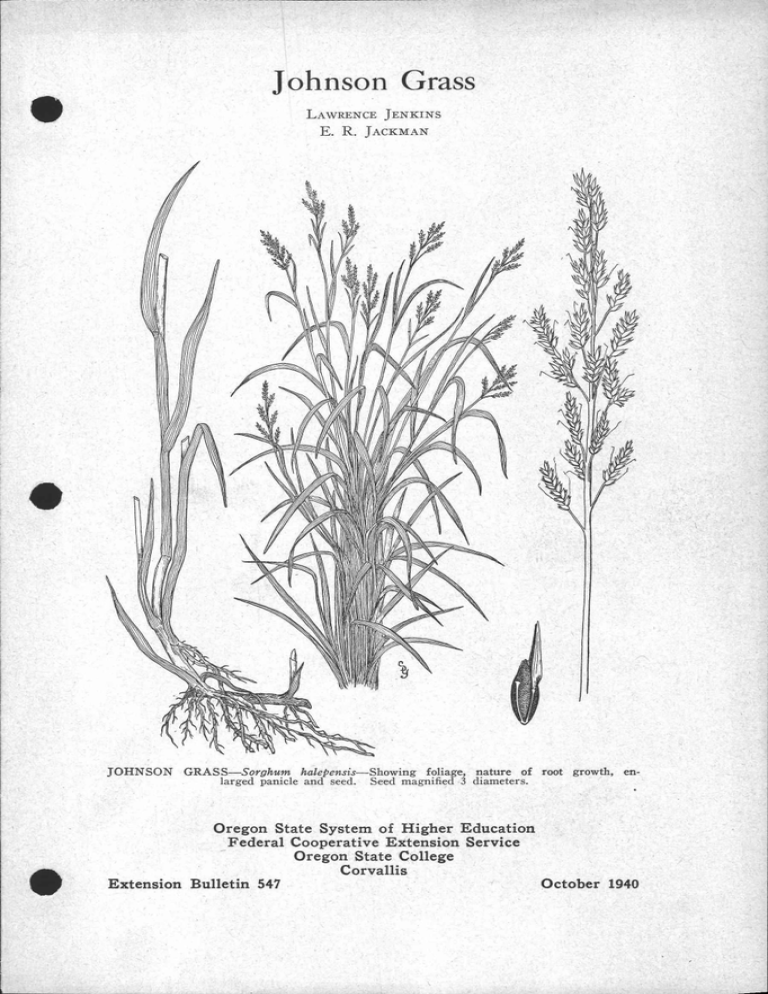
Johnson Grass LAWRENCE JENKINS E. R. JACKMAN JOHNSON GRASSSorghum halepensisShowing foliage, nature of root growth, larged panicle and seed. Seed magnified 3 diameters. en- Oregon State System of Higher Education Federal Cooperative Extension Service Oregon State College Corvallis October 1940 Extension Bulletin 547 Johnson Grass (Sorghum halepense) Other names: Means-grass, Millet-grass By LAWRENCE JENKINS and E. R. JACKMAN* Illustrations by Cathrine Davis Young Johnson grass reproduces by seed and an extensive system of rootstocks. Very little of it occurs in Oregon but there are scattered patches located mainly in southern Oregon and along the Columbia River. It prefers rich bottom soils or irrigated land. It resembles Sudan grass, but has large fleshy rootstocks while Sudan grass has a fibrous root system. It is a heat-loving plant and starts growth late in the spring. If allowed to grow undisturbed, the plant forms large rootstocks mostly in the top 8 inches of soil. New rootstocks form each season, and the old ones die, their extent and size depending on the amount of leaf growth. Top growth is usually from 3 to 6 feet high. Foliage is rank and coarse;; leaves are narrow and from 12 to 18 inches long with a prominent whitish vein in the center. Stems are pithy and sweet to the taste. The flowering head is open, like Sudan grass, and produces many reddish-brown seeds, giving a purple or red appearance to the entire head. Unlike Sudan grass, the seeds shatter readily when ripe. They are slightly smaller than Sudan grass seeds, about the length and width of flax seeds, but the sides are rounded, not flat. Seeds pass through most animals uninjured. Johnson grass is reported to be poisonous after a frost, or if a rank growth wilts because of lack of moisture. Oregon seed law. Johnson grass is classed by law as a noxious weed, and if its seeds are present in any kind of seed covered by the seed law, the fact must be stated on the label. In addition, seed may not be sold at all if the percentage of Johnson grass exceeds certain prescribed limits. Control. Draw the roots close to the surface by frequent cuttings or close pasturing for two years. Then dry plow the land and leave the furrow slice on edge to dry out the exposed rootstocks. When thoroughly dry, harrow to remove as many of the root parts as possible, rake, and burn them, then summer-fallow the remainder of the season. Control is usually complete in one year. Since growth starts late, the deferred-fallow system works well. Plow the ground deeply in the fall, plant a fall crop at a heavy rate of seeding, cut for hay the following spring, and clean fallow the remainder of the season. Small patches can usually be killed by hoeing them once a week for one entire season. It is best to follow with a cultivated crop to aid in detecting stragglers. Sodium chlorate at the rate of 3 pounds per square rod is usually effective. Use only after reading precautions in Extension Bulletin 510. ACKNOWLEDGMENTS:The authors thank Dr. Helen M. Gilkey, Curator of Herbarium, Hyslop, Chief, Division of Plant Industries, made helpful suggestions. for reading the manuscript and checking the description of the plant. Professor G. R. * E. R. Jackman is Extension Specialist in Farm Crops and Lawrence Jenkins is Assistant Specialist in Farm Crops at Oregon State College. Cooperative Extension Work in Agriculture and Home Economics Wm. A. Schoenfeld, Director Oregon State College and United States Department of Agriculture, Cooperating Printed and distributed in furtherance of the Acts of Congress of May 8 and June 30, 1914
